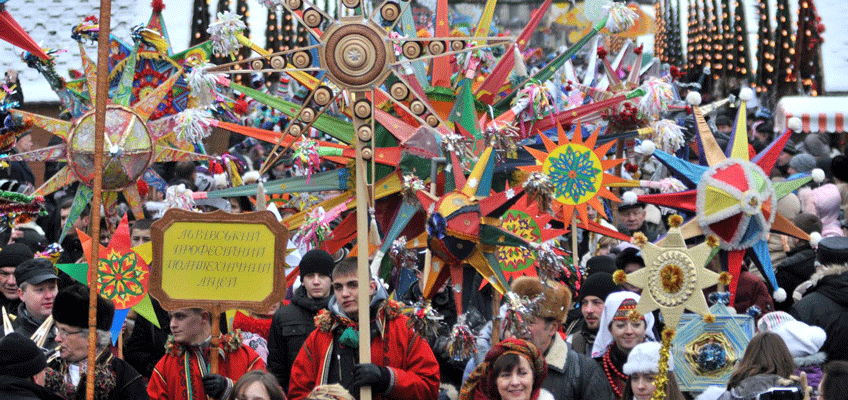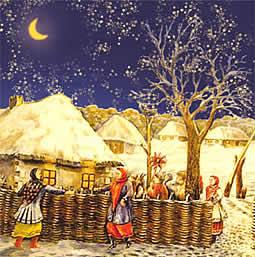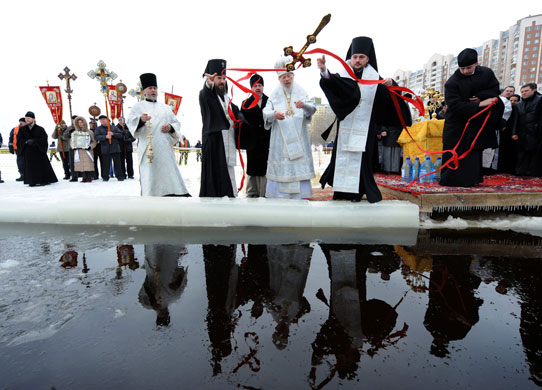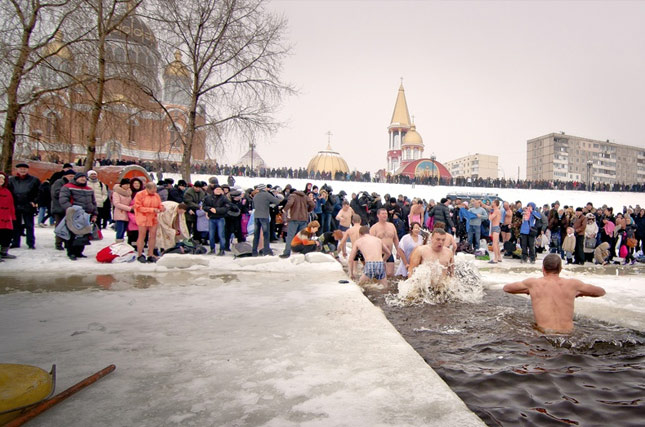 |
| Wood cut of carolers. Source: Infoukes |
Caroling is an important part of the Christmas celebration. Villages and city, all are full of caroling. Some cities, like Lviv have parades of carolers, carrying symbols of the holiday.
 |
| Christmas parade in Lviv, Ukraine. |
 |
| Musician playing the tsymbaly, accordion and violin in Beatlya, Ukraine |
The carolers are groups of people who go from house to house, a little like trick or treating in the United States, they ask for treats, but the have to perform in order to get them. There are at least three members in a caroling group. One carries the star, which is mounted on a pole. One is the bag carrier, who collects the treats and gifts, and one is dressed as a goat. Often there are musicians playing the violin, tsymbaly (hammered dulcimer) and in some areas a traditional long horn.
 |
| Carolers knock on the window of a house, asking permission to come in and sing. |
The groups approaches a house, knocks and ask permission to sing. After they come in, they sing for each member of the household. Then the put on a skit featuring the goat. The goat, a symbol of fertility, has pagan origins. In the skit, the goat dies and then is revived, symbolizing the end of winter and the coming of spring. The carolers finish up by reciting short poems, wishing each member of the household a good holiday. Gifts are given, and they proceed to the next house.
 |
| Christmas carolers, from an old Christmas card. |
 |
| Christmas Carolers, painting by Oleksandr Leschenko |
 |
| Malanka in Vaskivtsi, in the Bukovina region of Ukraine. |
 |
| In the United States and Canada, Malanka is celebrated like New Year's Eve. |
The holidays end with the Epiphany or Jordan. This holiday commemorates the baptism of Jesus Christ in the Jordan River. People attend church and bring home small containers of holy water, which they keep in their homes for the next year.
 |
| Epiphany observances in Kiev, Ukraine. Source: The Guardian. |
 |
| Some Ukrainians believe that a dip in icy river on The Epiphany prevents illness. |
No comments:
Post a Comment